Search Result
Results for "
psychiatric disorders
" in MedChemExpress (MCE) Product Catalog:
1
Biochemical Assay Reagents
3
Isotope-Labeled Compounds
| Cat. No. |
Product Name |
Target |
Research Areas |
Chemical Structure |
-
- HY-B0339
-
|
|
Sodium Channel
|
Neurological Disease
|
|
Primidone is a potent anticonvulsant agent of the barbiturate class. Primidone is a neuronal voltage-gated sodium channel (VGSC) blocker and can be used for the study of epilepsy, essential tremor, and Psychiatric disorders .
|
-
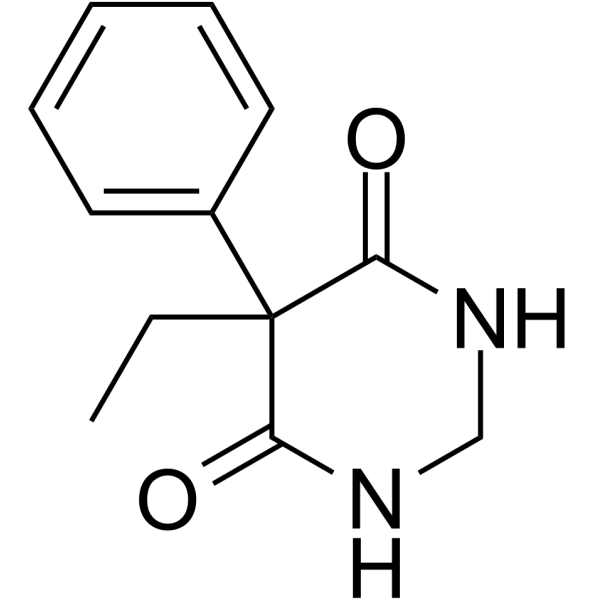
-
- HY-116076
-
|
|
5-HT Receptor
|
Neurological Disease
|
|
S-15535 is a highly selective 5-HT1A receptor ligand. S-15535 is an antagonist of postsynaptic 5-HT1A receptors and an agonist of presynaptic 5-HT1A receptors. S-15535 can be used in research on psychiatric disorders, such as anti-anxiety .
|
-
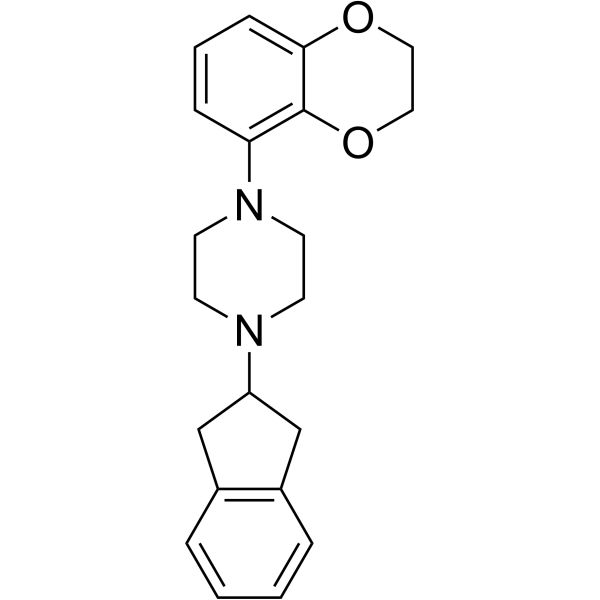
-
- HY-124607B
-
BRD3731
1 Publications Verification
|
GSK-3
|
Neurological Disease
Metabolic Disease
|
|
BRD3731 is a selective GSK3β inhibitor, with IC50s of 15 nM and 215 nM for GSK3β and GSK3α, respectively. BRD3731 is potentail for the research of post-traumatic stress disorder (PTSD), psychiatric disorder, diabetes, and neurodegenerative disorders .
|
-
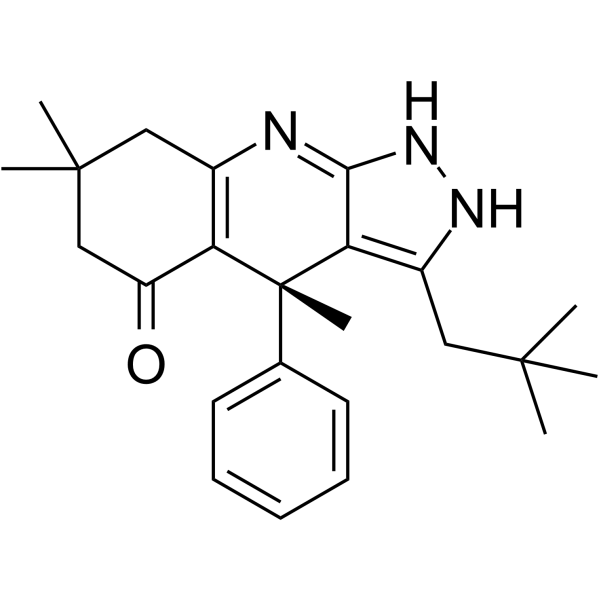
-
- HY-131287
-
|
|
mGluR
|
Neurological Disease
|
|
MGS0028 is a selective metabotropic glutamate 2/3 (mGlu2/3) receptor agonist. MGS0028 can be used for psychiatric disorders research .
|
-
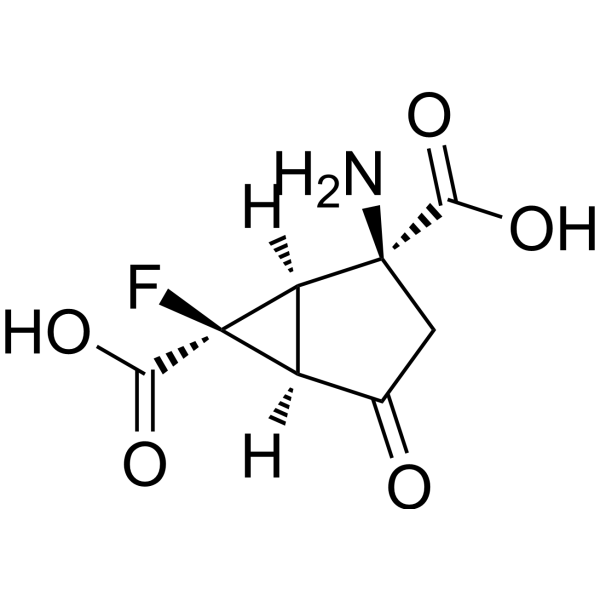
-
- HY-146076
-
|
|
5-HT Receptor
|
Neurological Disease
|
|
5-HT6/5-HT2A receptor ligand-1 (compound 33) is a dual 5-HT6/5-HT2A receptor antagonist, with a Ki of 2 nM and 11 nM, respectively. 5-HT6/5-HT2A receptor ligand-1 has the potential for neurological and psychiatric disorders research .
|
-
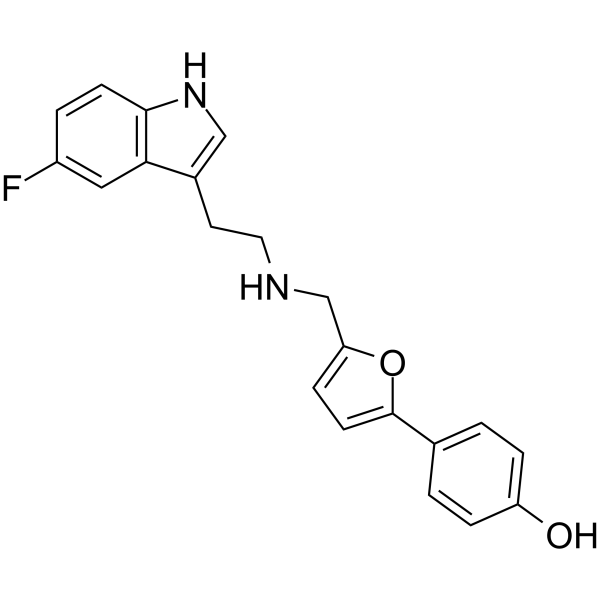
-
- HY-148325
-
|
|
nAChR
|
Neurological Disease
|
|
α7 Nicotinic receptor agonist-1 (Preparation 5) is an α7 nAChR agonist. α7 Nicotinic receptor agonist-1 can be used in studies of psychiatric disorders (such as schizophrenia, manic or hypomanic depression and anxiety disorders) and intellectual disorders (such as alzheimer's disease, learning deficits, cognitive deficits, attention deficits, memory loss, lewy body dementia and attention deficit hyperactivity disorder) .
|
-
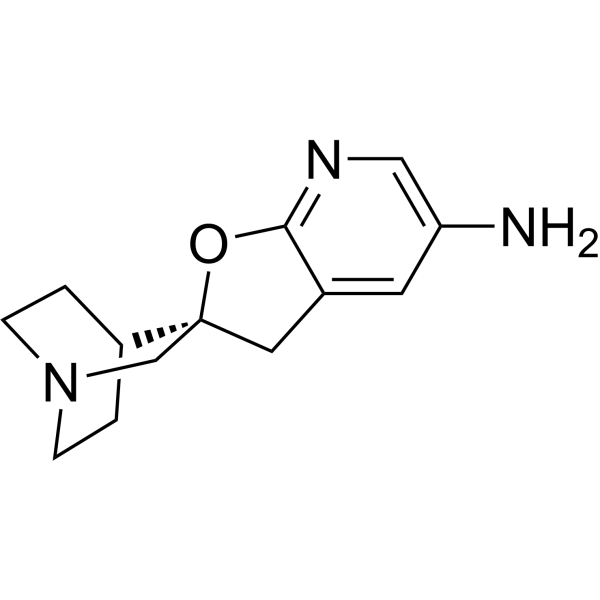
-
- HY-141495A
-
|
(-)-PW0464
|
Dopamine Receptor
|
Neurological Disease
|
|
Razpipadon ((-)-PW0464), an aromatic compound, is a dopamine receptor partial agonist. Razpipadon can be used in the study of dopamine D1 ligand-mediated related psychiatric disorders .
|
-

-
- HY-15522
-
|
|
Oxytocin Receptor
|
Neurological Disease
|
|
WAY-267464 is a non-peptide oxytocin receptor (OTR) agonist. WAY-267464 can impair social recognition memory in rats through a vasopressin 1A receptor antagonist action. WAY-267464 can be used for the research of psychiatric disorders, such disorders include autism spectrum disorder, schizophrenia, and social anxiety disorder .
|
-

-
- HY-110175
-
|
|
iGluR
|
Neurological Disease
|
|
CX614 is a positive variant modulator of AMPA receptors that enhances excitatory postsynaptic potentials (amplitude and duration) by blocking and slowing the inactivation of responses to glutamate and automatically evokes excitatory postsynaptic currents in neuronal cultures. CX614 can be used in the study of psychiatric disorders such as depression .
|
-
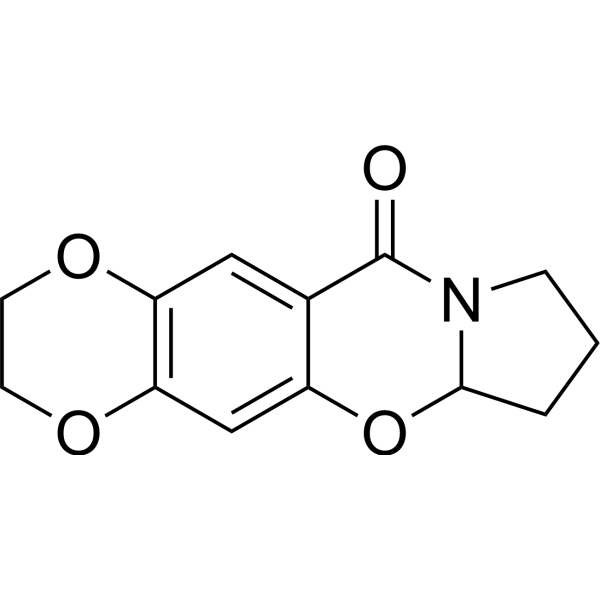
-
- HY-18078
-
|
|
Phosphodiesterase (PDE)
|
Neurological Disease
|
|
PQ-10 is a potent inhibitor of Phosphodiesterase 10A (PDE10A) with IC50 andED50 of 4.6 nM and 13 mg/kg, respectively. PQ-10 induces patterns of brain glucose metabolism which can be a potential translational biomarker. PQ-10 has the potential for researching psychiatric disorders like schizophrenia .
|
-
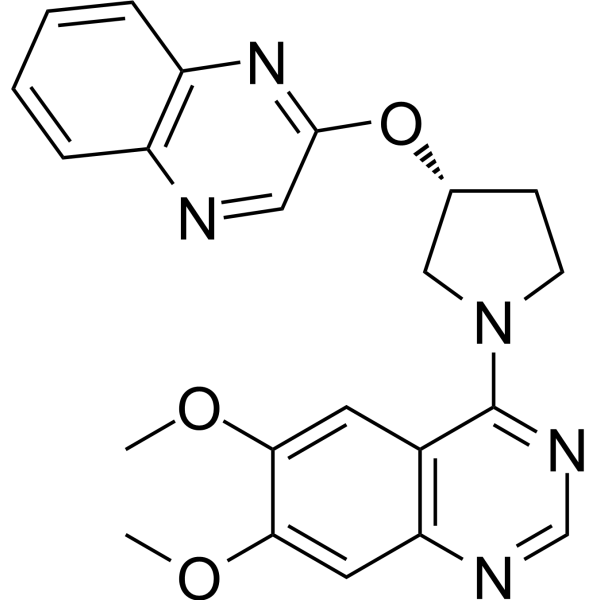
-
- HY-16716
-
|
RG1662; RO5186582
|
GABA Receptor
|
Neurological Disease
|
|
Basmisanil (RG1662) is a highly selective orally active α subunit-containing GABAA receptors (GABAAα5) negative allosteric modulator (NAMs). Basmisanil can inhibit GABAA-α5 with a Ki value of 5 nM and IC50 value of 8 nM, respectively. Basmisanil can be used for the research of multiple cognitive and psychiatric disorders .
|
-
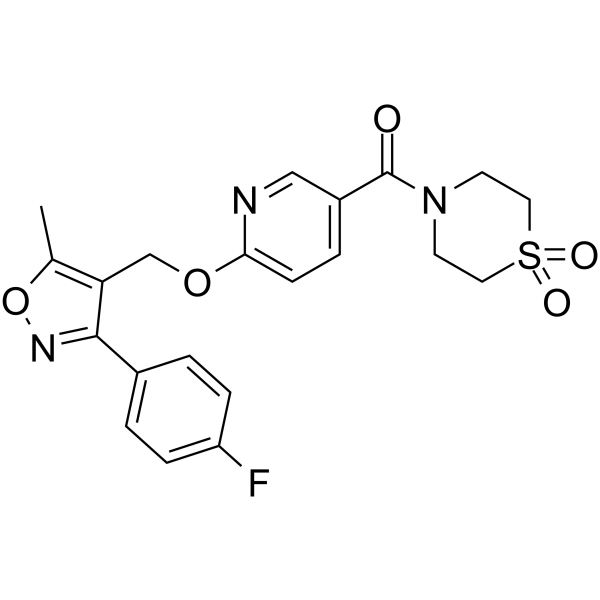
-
- HY-101490
-
|
|
Phosphodiesterase (PDE)
|
Neurological Disease
|
|
PDE1-IN-2 is a PDE1 inhibitor extracted from patent WO2016/55618 A1, example 31. PDE1-IN-2 has IC50 values of 6 nM, 140 nM and 164 nM for PDE1C, PDE1B and PDE1A, respectvely. PDE1-IN-2 is developed for the research of neurodegenerative disorders and psychiatric disorders .
|
-
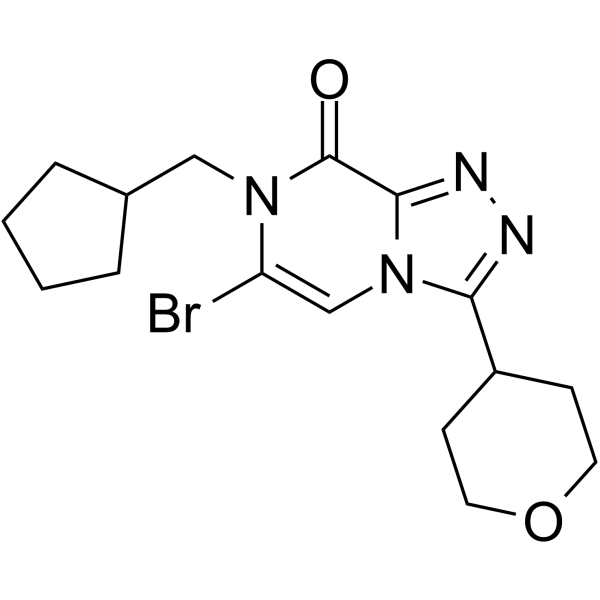
-
- HY-U00021
-
-
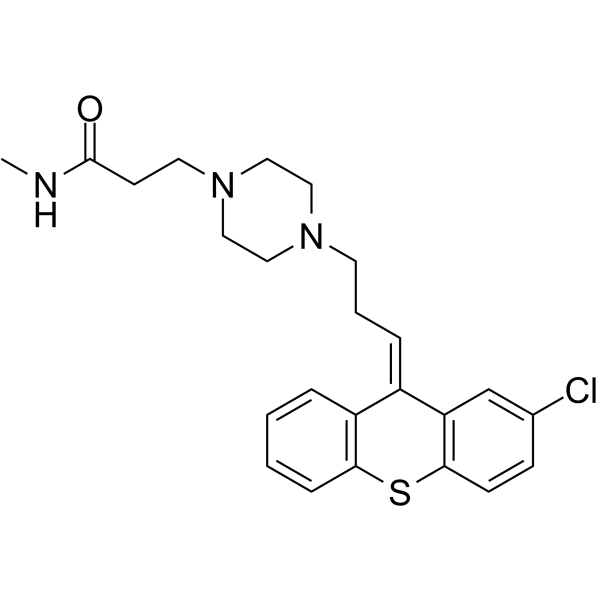
-
- HY-153530
-
|
|
Others
|
Neurological Disease
Metabolic Disease
|
LI-2242 is an inositol hexakisphosphate kinase (IP6K) inhibitor. LI-2242 has inhibition effect for IP6K1, IP6K2, IP6K3 and IPMK with IC50 values of 31 nM, 42 nM, 8.7 nM and 1944 nM, respectively. LI-2242 can be used for thew research of type II diabetes, obesity, metabolic complications, venous thrombosis, and psychiatric disorders .
|
-

-
- HY-107664A
-
|
|
Neurotensin Receptor
|
Neurological Disease
|
|
SR 142948 dihydrochloride is an orally active and selective non-peptide neurotensin receptor (NT) antagonist with IC50s of 1.19 nM, 0.32 nM, 3.96 nM in h-NTR1-CHO cells, HT-29 cells, and adult rat brain, respectively. SR 142948 dihydrochloride antagonizes NT-induced inositol monophosphate formation in HT-29 cells with an IC50 of 3.9 nM. SR 142948 dihydrochloride blocks hypothermia, analgesia and steering behavior induced by NT in vivo. SR 142948 dihydrochloride shows blood-brain permeability and can be used in study of psychiatric disorders .
|
-

-
- HY-A0243
-
|
1664CB; Acepromethazine
|
|
|
|
Aceprometazine (1664CB) is an orally active antipsychotic. Aceprometazine can be used in the study of psychiatric disorders, such as depression .
|
-
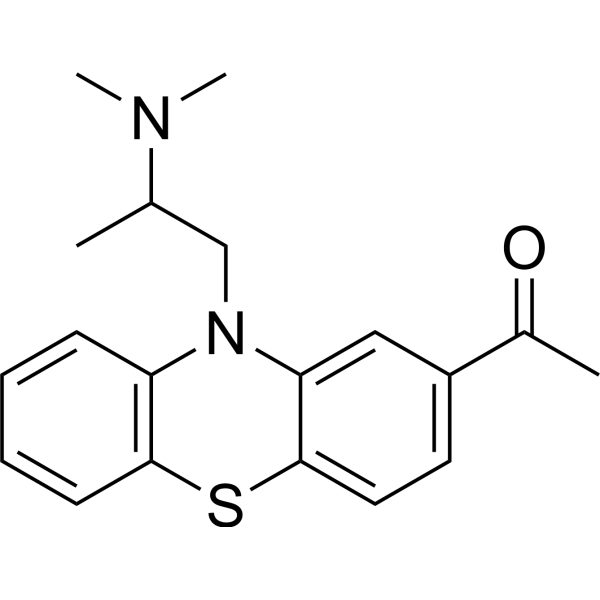
-
- HY-101841
-
|
|
mAChR
|
Neurological Disease
|
|
LY 2033298 is a selective positive allosteric modulator of the muscarinic M4 receptor. LY 2033298 can be used in the study of psychiatric disorders .
|
-
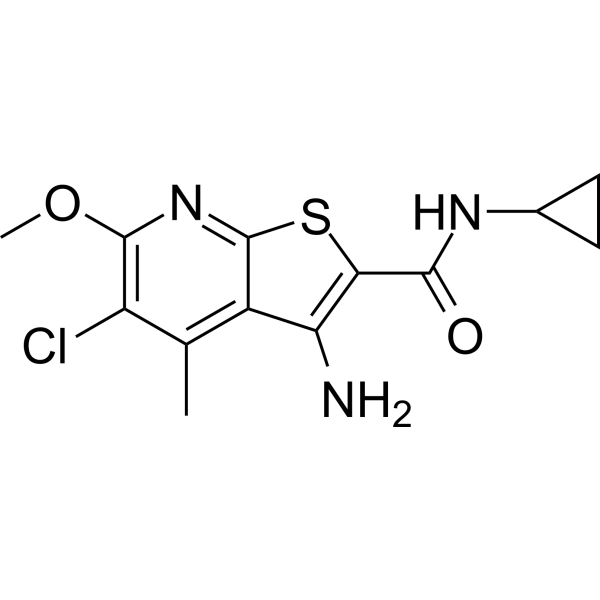
-
- HY-107693
-
-
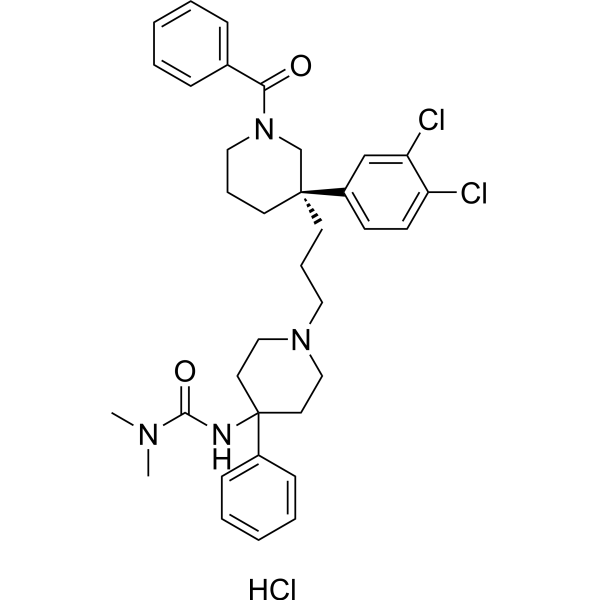
-
- HY-W250174
-
|
3,5-Diiodosalicylic acid lithium salt
|
Biochemical Assay Reagents
|
Others
|
|
Lithium 3,5-diiodosalicylate is a compound used in the study of bipolar disorder and other psychiatric disorders. It contains lithium and a salicylate. Lithium 3,5-diiodosalicylate works by affecting the levels of certain neurotransmitters in the brain, including dopamine and serotonin.
|
-
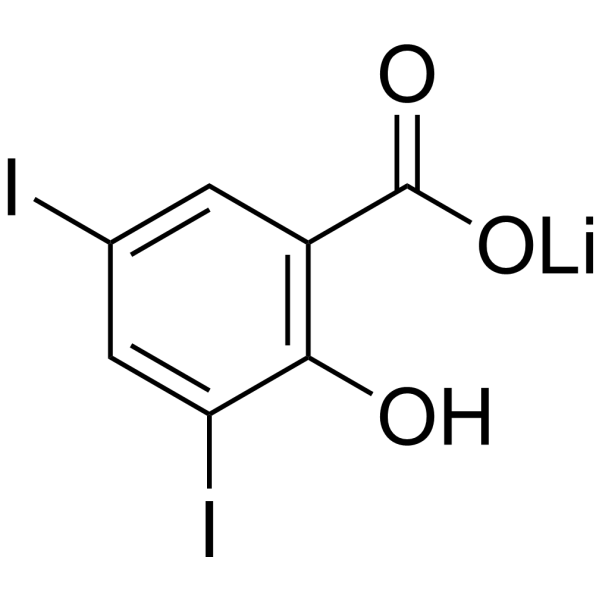
-
- HY-108679
-
|
|
Oxytocin Receptor
|
Neurological Disease
|
|
WAY-267464 hydrochloride is a non-peptide oxytocin receptor (OTR) agonist. WAY-267464 hydrochloride can impair social recognition memory in rats through a vasopressin 1A receptor antagonist action. WAY-267464 hydrochloride can be used for the research of psychiatric disorders, such disorders include autism spectrum disorder, schizophrenia, and social anxiety disorder .
|
-

-
- HY-B0339S
-
|
|
Sodium Channel
|
Neurological Disease
|
|
Primidone-d5 is the deuterium labeled Primidone. Primidone is a potent anticonvulsant agent of the barbiturate class. Primidone is a neuronal voltage-gated sodium channel (VGSC) blocker and can be used for the study of epilepsy, essential tremor, and Psychiatric disorders[1].
|
-

-
- HY-109164
-
|
AGN-241751; GATE-251
|
iGluR
|
Neurological Disease
|
|
Zelquistinel (AGN-241751) is a N-methyl-D-aspartate (NMDA) receptor partial agonist used for the research of depression, anxiety and other related psychiatric disorders .
|
-
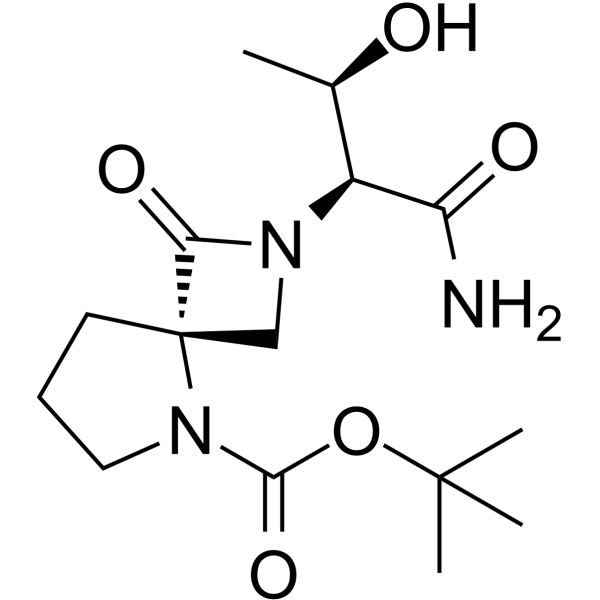
-
- HY-155989
-
|
|
GSK-3
|
Neurological Disease
|
|
GSK3-IN-4 (compound 0715) is a potent GSK3 inhibitor. GSK3-IN-4 can be used for psychiatric disorder research .
|
-
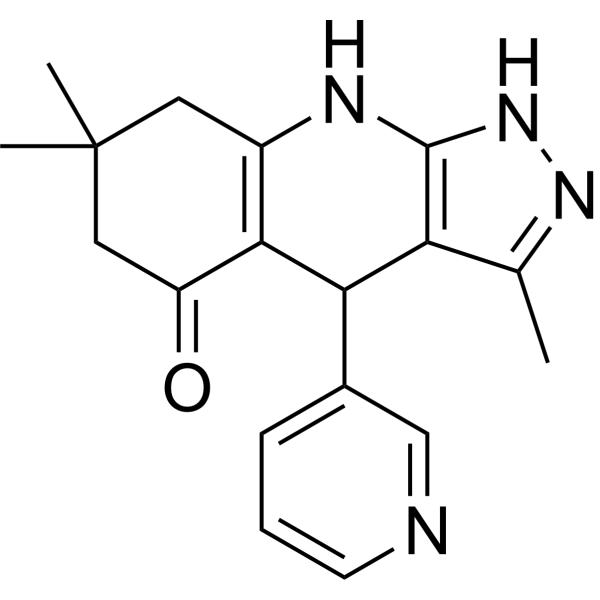
-
- HY-B0762S
-
|
O-Acetyl-L-carnitine-d3 (hydrochloride)
|
Endogenous Metabolite
|
Neurological Disease
|
|
Acetyl-L-carnitine-d3 (hydrochloride) is the deuterium labeled Acetyl-L-carnitine hydrochloride. Acetyl-L-carnitine hydrochloride is a blood-brain permeable acetyl ester of the amino acid L-carnitine found in the body. Acetyl-L-carnitine hydrochloride is often used as a dietary supplement, and exibits anti-stress-related psychiatric disorders[1].
|
-

-
- HY-103429
-
|
LY163502
|
Dopamine Receptor
|
Neurological Disease
|
|
Quinelorane dihydrochloride (LY163502) is a potent dopamine D3/D2 receptor agonist. Quinelorane has the potential for neurological and psychiatric disorders research .
|
-
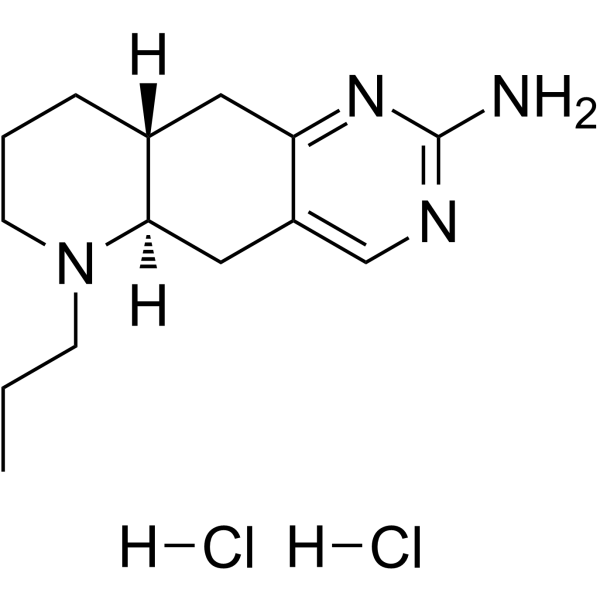
-
- HY-139580
-
|
CAD-9303
|
iGluR
|
Neurological Disease
|
|
Plazinemdor is a N-methyl-D-aspartate(NMDA) receptor positive allosteric modulator. Plazinemdor can be uses in the research of psychiatric, neurological, and neurodevelopmental disorders, as well as diseases of the nervous system ..
|
-

-
- HY-163096
-
|
|
GPR88
|
Neurological Disease
|
|
GPR88 agonist 3 (compound 20) is a GPR88 agonist 3, with an EC50 of 204 nM. GPR88 agonist 3 can be used for psychiatric and neurodegenerative disorders research .
|
-
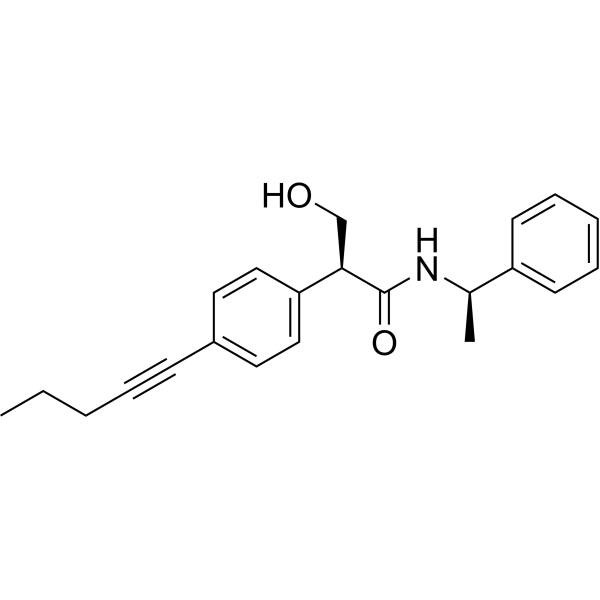
-
- HY-B0762S1
-
|
O-Acetyl-L-carnitine-d3-1 (hydrochloride)
|
Endogenous Metabolite
|
Neurological Disease
|
|
Acetyl-L-carnitine-d3-1 (hydrochloride) is the deuterium labeled Acetyl-L-carnitine hydrochloride. Acetyl-L-carnitine hydrochloride is a blood-brain permeable acetyl ester of the amino acid L-carnitine found in the body. Acetyl-L-carnitine hydrochloride is often used as a dietary supplement, and exibits anti-stress-related psychiatric disorders[1].
|
-
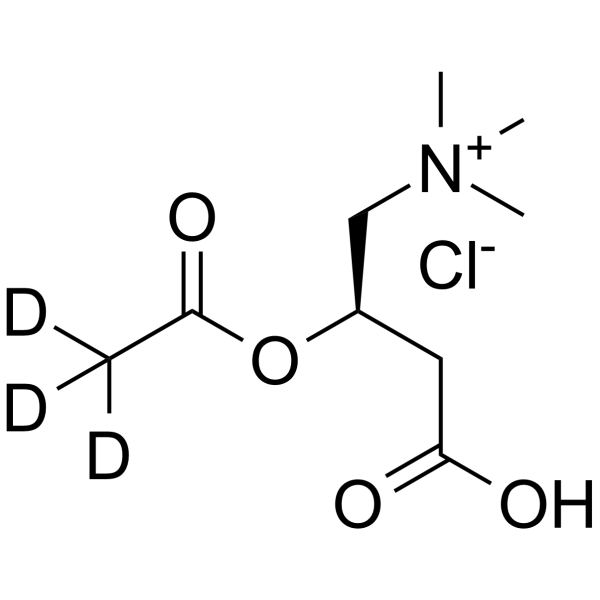
-
- HY-156817
-
|
|
Others
|
Neurological Disease
|
|
TNIK-IN-6 (Compound 9) is an inhibitor of Traf2 and Nck-interacting kinase (TNIK) and , with IC50 of 0.93 μM, that plays important roles in neurological and psychiatric disorders .
|
-
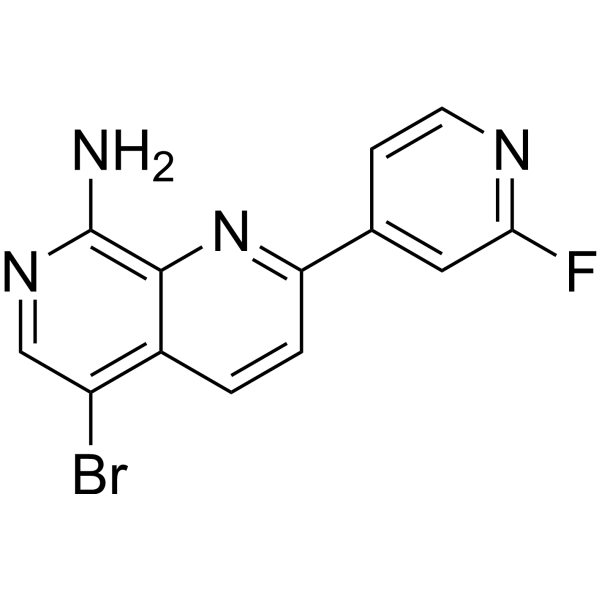
-
- HY-B0762
-
|
O-Acetyl-L-carnitine hydrochloride; ALCAR hydrochloride
|
Endogenous Metabolite
|
Neurological Disease
|
|
Acetyl-L-carnitine (O-Acetyl-L-carnitine) hydrochloride is a blood-brain permeable acetyl ester of the amino acid L-carnitine found in the body. Acetyl-L-carnitine hydrochloride is often used as a dietary supplement, and exibits anti-stress-related psychiatric disorders .
|
-
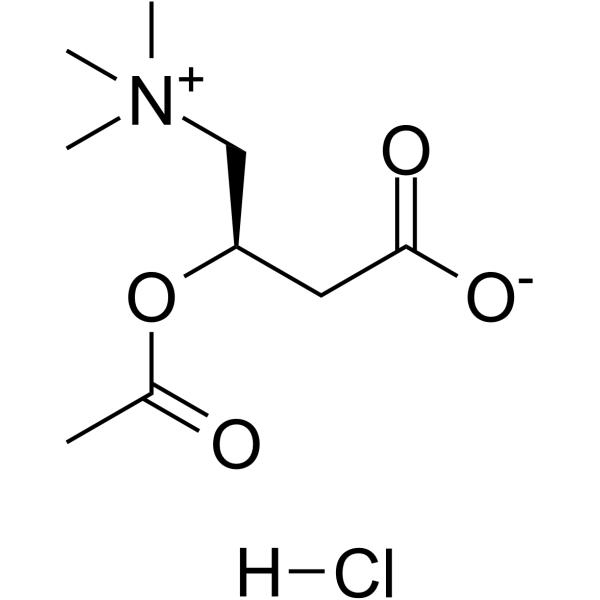
-
- HY-134661
-
|
|
GPR6
|
Neurological Disease
|
|
(S)-CVN424 is a potent G-Protein-Coupled Receptor 6 (GPR6) modulator. (S)-CVN424 has the potential for a variety of neurological and psychiatric disorders research, including Parkinson's disease .
|
-
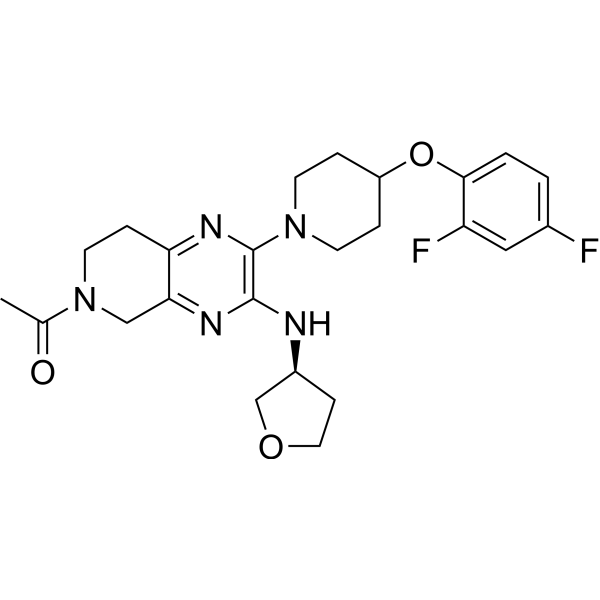
-
- HY-B1487
-
|
Tricyclamol hydrochloride; (±)-Procyclidine hydrochloride
|
iGluR
mAChR
|
Neurological Disease
|
|
Procyclidine (Tricyclamol, (±)-Procyclidine) hydrochloride , an anticholinergic agent, is a muscarinic receptor antagonist that also has the properties of an N-methyl-D-aspartate (NMDA) antagonist. Procyclidine hydrochloride can be used in studies of Parkinson's disease and related psychiatric disorders such as Soman-induced epilepsy .
|
-
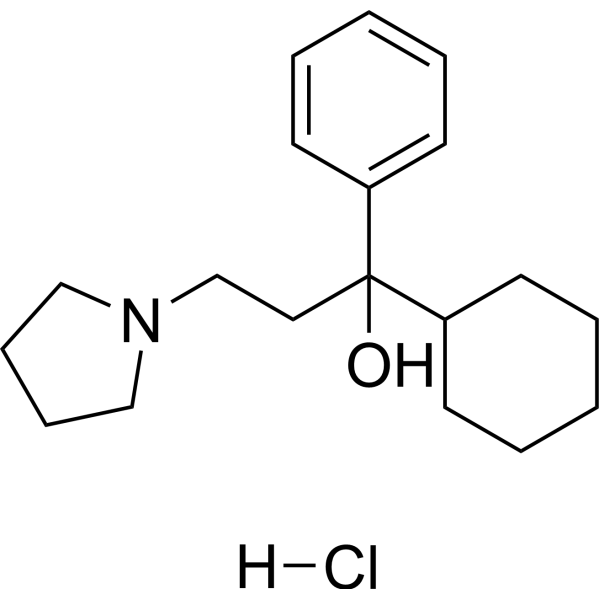
-
- HY-B1487A
-
|
Tricyclamol; (±)-Procyclidine
|
|
|
|
Procyclidine (Tricyclamol; (±)-Procyclidine), an anticholinergic agent, is a muscarinic receptor antagonist that also has the properties of an N-methyl-D-aspartate (NMDA) antagonist. Procyclidine can be used in studies of Parkinson's disease and related psychiatric disorders such as Soman-induced epilepsy .
|
-
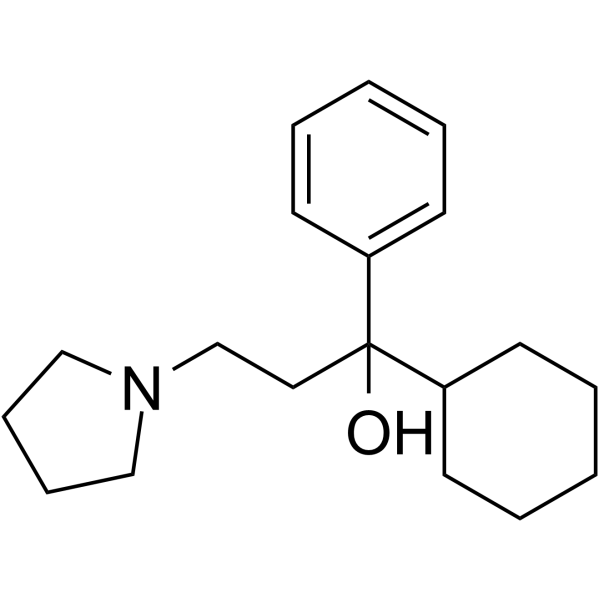
-
- HY-B0339R
-
|
|
Sodium Channel
|
Neurological Disease
|
|
Primidone (Standard) is the analytical standard of Primidone. This product is intended for research and analytical applications. Primidone is a potent anticonvulsant agent of the barbiturate class. Primidone is a?neuronal?voltage-gated sodium channel (VGSC) blocker and can be used for the study of epilepsy, essential tremor, and Psychiatric disorders .
|
-
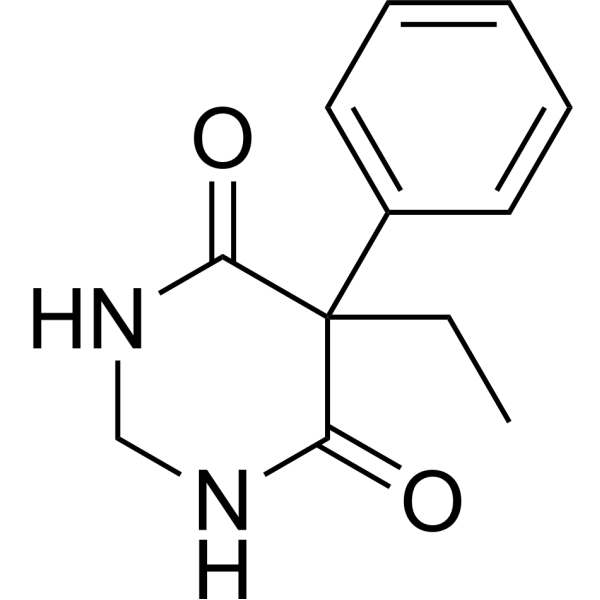
-
- HY-13204
-
|
KL 373 hydrochloride
|
mAChR
|
Neurological Disease
|
|
Biperiden (KL 373) hydrochloride is a non-selective muscarinic receptor antagonist that competitively binds to M1 muscarinic receptors, thereby inhibiting acetylcholine and enhancing dopamine signaling in the central nervous system. Biperiden hydrochloride has the potential for the research of Parkinson's disease and other related psychiatric disorders .
|
-
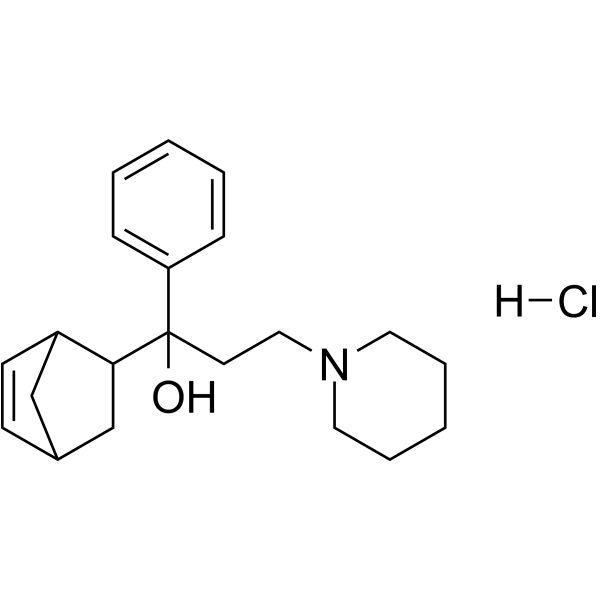
-
- HY-13204A
-
|
KL 373
|
mAChR
|
Neurological Disease
|
|
Biperiden (KL 373) is a non-selective muscarinic receptor antagonist that competitively binds to M1 muscarinic receptors, thereby inhibiting acetylcholine and enhancing dopamine signaling in the central nervous system. Biperiden has the potential for the research of Parkinson's disease and other related psychiatric disorders .
|
-

-
- HY-100783B
-
|
(+)-Bicuculline methobromide; d-Bicuculline methobromide
|
GABA Receptor
|
Neurological Disease
|
|
Bicuculline methobromide is a selective GABAA Receptor antagonist with an IC50 value of 3 μM. Bicuculline methobromide induces clonic tonic convulsions in mammals and can also be used to block Ca 2+ activated potassium channels. Bicuculline methobromide can be used in studies of epilepsy and other related psychiatric disorders .
|
-
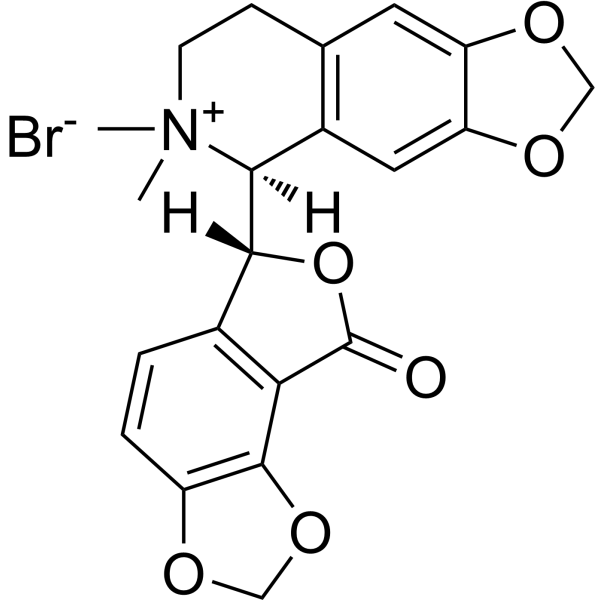
-
- HY-13999
-
|
|
Others
|
Neurological Disease
|
|
NSI-189, benzylpiperizine-aminiopyridine, is a multi-domain neurogenic compound with brain-therapeutic properties. NSI-189 can stimulate neurogenesis of human hippocampus-derived neural stem cells in vitro and stimulates neurogenesis in murine hippocampus in vivo. NSI-189 can be used for the research of psychiatric disorders .
|
-
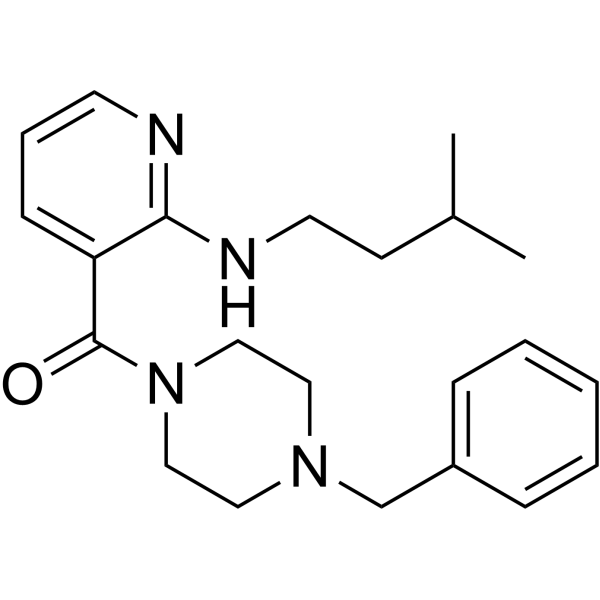
-
- HY-B0762R
-
|
O-Acetyl-L-carnitine hydrochloride (Standard); ALCAR hydrochloride (Standard)
|
Endogenous Metabolite
|
Neurological Disease
Cancer
|
|
Acetyl-L-carnitine (hydrochloride) (Standard) is the analytical standard of Acetyl-L-carnitine (hydrochloride). This product is intended for research and analytical applications. Acetyl-L-carnitine (O-Acetyl-L-carnitine) hydrochloride is a blood-brain permeable acetyl ester of the amino acid L-carnitine found in the body. Acetyl-L-carnitine hydrochloride is often used as a dietary supplement, and exibits anti-stress-related psychiatric disorders .
|
-
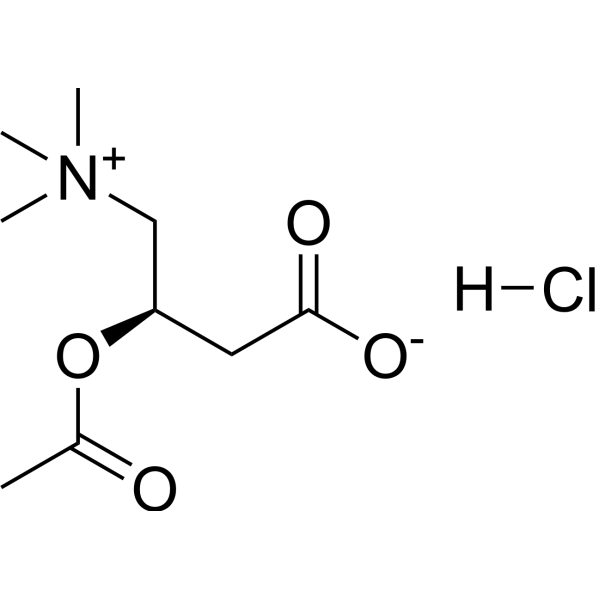
-
- HY-137790
-
|
(+)-Bicuculline methochloride; d-Bicuculline methochloride
|
GABA Receptor
|
Neurological Disease
|
|
Bicuculline ((+)-Bicuculline; d-Bicuculline) methochloride is a selective GABAA receptor antagonist with an IC50 value of 3 μM. Bicuculline methochloride induces clonic tonic convulsions in mammals and can also be used to block Ca 2+ activated potassium channels. Bicuculline methochloride can be used in studies of epilepsy and other related psychiatric disorders .
|
-
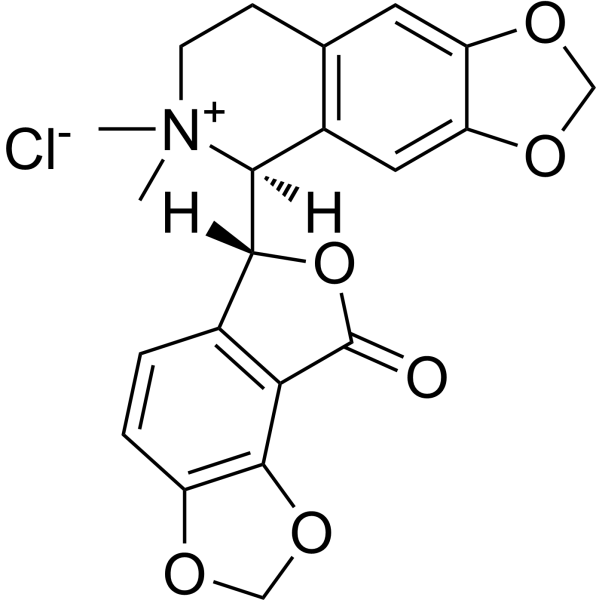
-
- HY-19733
-
|
ITI-007 tosylate
|
5-HT Receptor
Dopamine Receptor
|
Neurological Disease
|
|
Lumateperone (ITI-007) tosylate is a 5-HT2A receptor antagonist (Ki = 0.54 nM), a partial agonist of presynaptic D2 receptors and an antagonist of postsynaptic D2 receptors (Ki = 32 nM), and a dopamine D1 receptor modulator. Lumateperone tosylate has anticancer activity and can also be used in studies of psychiatric disorders such as schizophrenia .
|
-
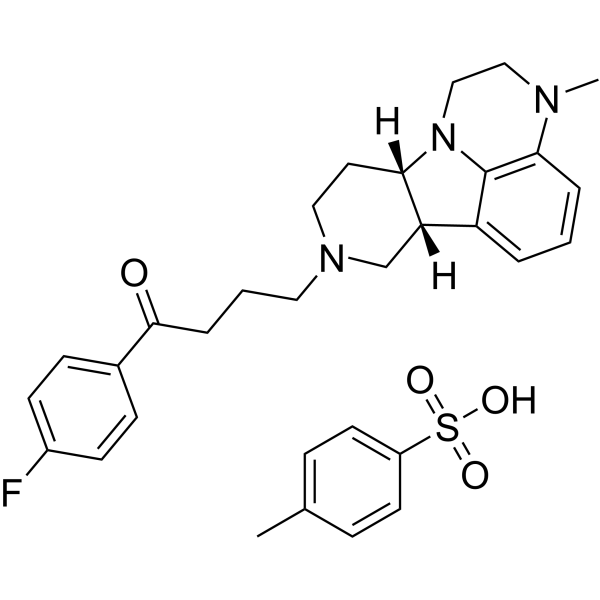
-
- HY-13204B
-
|
KL 373 lactate
|
mAChR
|
Neurological Disease
|
|
Biperiden (KL 373) lactate is an orally active non-selective muscarinic receptor antagonist that competitively binds to M1 muscarinic receptors. Biperiden (KL 373) lactate inhibits acetylcholine and enhances dopamine signaling in the central nervous system. Biperiden (KL 373) lactate has the potential for the research of Parkinson's disease and other related psychiatric disorders .
|
-

-
- HY-17637
-
|
ITI-007
|
|
|
|
Lumateperone (ITI-007) is a 5-HT2A receptor antagonist (Ki = 0.54 nM), a partial agonist of presynaptic D2 receptors and an antagonist of postsynaptic D2 receptors (Ki = 32 nM), and a dopamine D1 receptor modulator. Lumateperone has anticancer activity and can also be used in studies of psychiatric disorders such as schizophrenia .
|
-
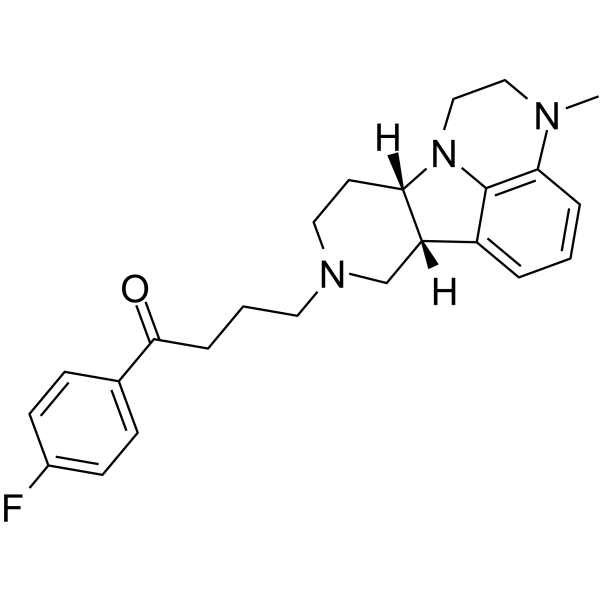
-
- HY-13204R
-
|
KL 373 hydrochloride (Standard)
|
mAChR
|
Neurological Disease
|
|
Biperiden (hydrochloride) (Standard) is the analytical standard of Biperiden (hydrochloride). This product is intended for research and analytical applications. Biperiden (KL 373) hydrochloride is a non-selective muscarinic receptor antagonist that competitively binds to M1 muscarinic receptors, thereby inhibiting acetylcholine and enhancing dopamine signaling in the central nervous system. Biperiden hydrochloride has the potential for the research of Parkinson's disease and other related psychiatric disorders .
|
-
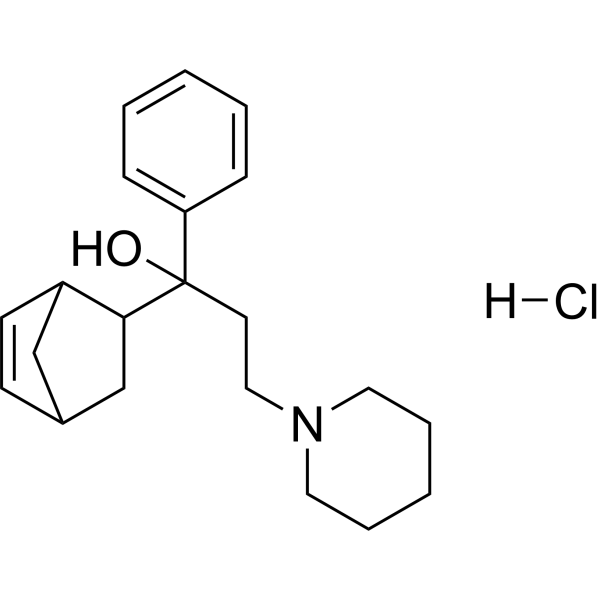
-
- HY-12152
-
|
NSC 216666
|
nAChR
|
Neurological Disease
Inflammation/Immunology
|
|
PNU-120596 (NSC 216666) is a potent and selective α7 nAChR positive allosteric modulator (PMA) with an EC50 of 216 nM. PNU-120596 is inactive against α4β2, α3β4, and α9α10 nAChRs. PNU-120596 has the potential for psychiatric and neurological disorders research .
|
-
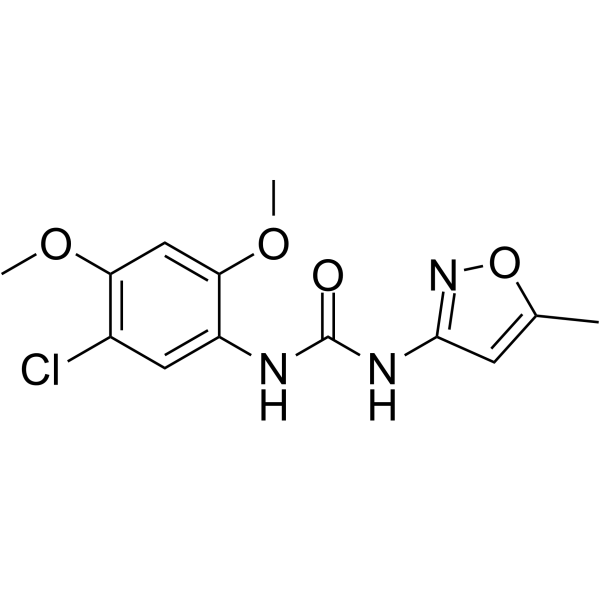
-
- HY-113969
-
|
|
Endogenous Metabolite
|
Neurological Disease
|
|
7,8-Dichloro-1,2,3,4-tetrahydroisoquinoline (compound 11), a tetrahydroisoquinoline (THIQ) derivative, is a selective phenylethanolamine N-methyltransferase (PNMT) inhibitor with a Ki value of 0.3 μM. 7,8-Dichloro-1,2,3,4-tetrahydroisoquinoline can be used in research on psychiatric disorders related to Alzheimer's disease and Parkinson's disease .
|
-

-
- HY-59201A
-
|
|
nAChR
5-HT Receptor
|
Neurological Disease
|
|
A-582941 dihydrochloride is a potent, selective and brain-penetrant partial agonist of α7 nAChR, with Kis of 10.8 and 16.7 nM in rat brain membranes and human frontal cortex, respectively. A-582941 dihydrochloride also binds to human 5-HT3 receptor with a Ki of 150 nM. A-582941 has the potential for cognitive deficits associated with various neurodegenerative and psychiatric disorders research .
|
-
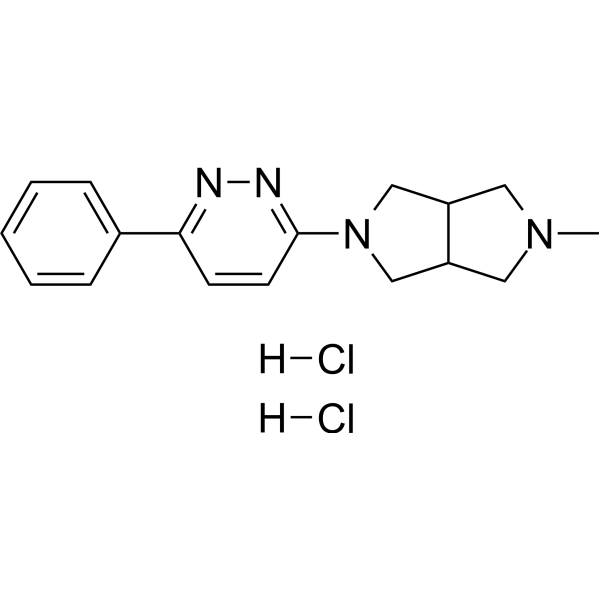
-
- HY-13456
-
|
|
iGluR
|
Neurological Disease
|
|
LY-404187 is a potent, selective and centrally active positive allosteric modulator of AMPA receptors, with the EC50s of 5.65, 0.15, 1.44, 1.66 and 0.21 µM for GluR1i, GluR2i, GluR2o, GluR3i and GluR4i, respectively. LY-404187 has therapeutic potential in a number of psychiatric disorders and neurodegenerative diseases .
|
-
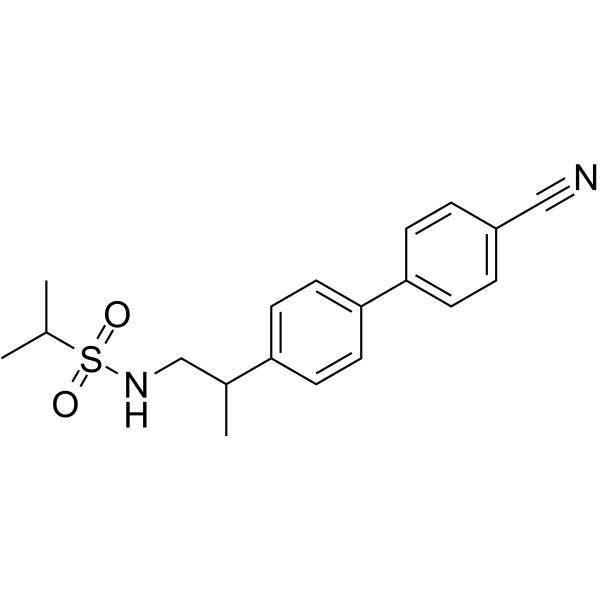
-
- HY-116451
-
|
|
Others
|
Neurological Disease
|
|
PF-04859989 hydrochloride is a brain-penetrant, irreversible kynurenine aminotransferase (KAT) II inhibitor with IC50s of 23 and 263 nM for hKAT II and rKAT II. PF-04859989 hydrochloride is selective for KAT II over human KAT I, KAT III, and KAT IV (IC50s of 22, 11, and >50 μM, respectively) .
|
-
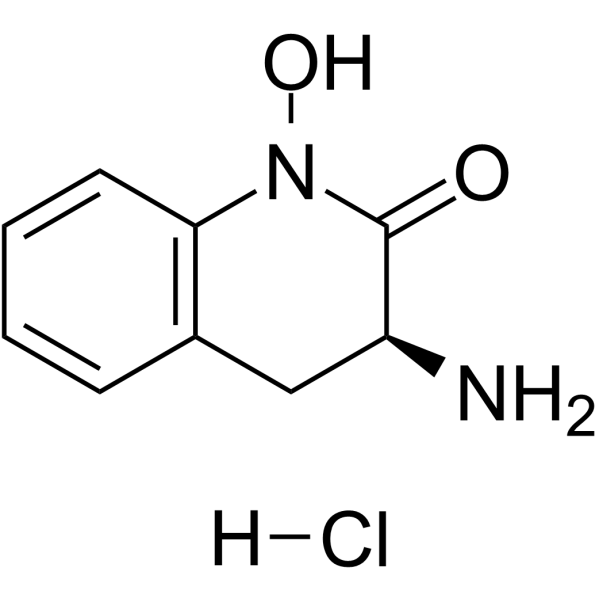
-
- HY-B1482
-
|
TPS-23 benzenesulfonate
|
|
|
|
Mesoridazine (TPS-23) benzenesulfonate, a metabolite of Thioridazine (HY-B0965A), acts as an orally active phenothiazine antipsychotic agent. Mesoridazine benzenesulfonate is a potent and rapid open-channel blocker of human ether-a-go-go related gene (hERG) channels and blocks hERG currents with an IC50 of 550 nM (at 0 mV) in human embryonic kidney 293 cells .Mesoridazine benzenesulfonate can be used for the research of schizophrenia, as well as certain other psychiatric disorders .
|
-
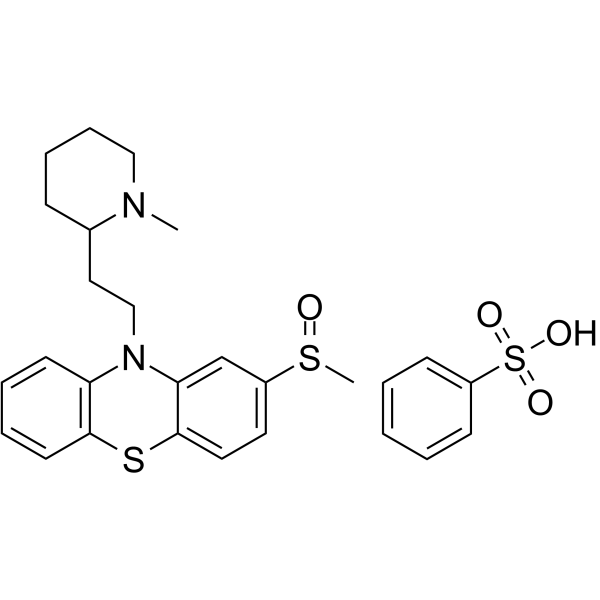
- HY-B1482A
-
|
TPS-23
|
|
|
|
Mesoridazine (TPS-23) , a metabolite of Thioridazine (HY-B0965A), acts as an orally active phenothiazine antipsychotic agent. Mesoridazine is a potent and rapid open-channel blocker of human ether-a-go-go related gene (hERG) channels and blocks hERG currents with an IC50 of 550 nM (at 0 mV) in human embryonic kidney 293 cells .Mesoridazine can be used for the research of schizophrenia, as well as certain other psychiatric disorders .
|
-
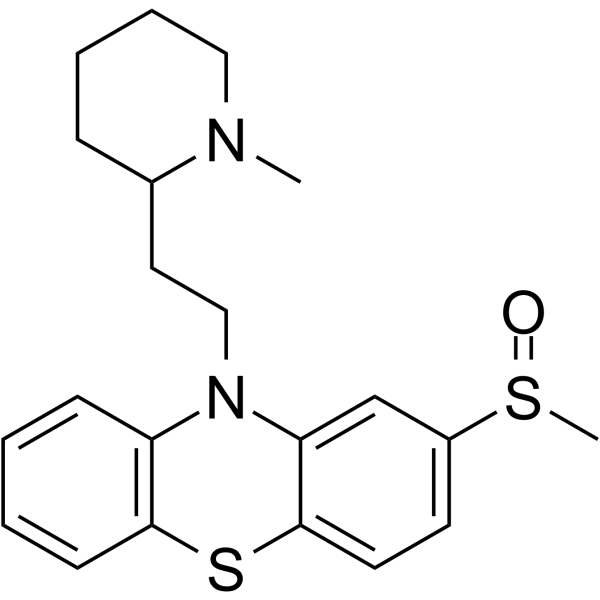
- HY-107664
-
|
|
Neurotensin Receptor
|
Neurological Disease
|
|
SR 142948 is an orally active and selective non-peptide neurotensin receptor (NT) antagonist with IC50s of 1.19 nM, 0.32 nM, 3.96 nM in h-NTR1-CHO cells, HT-29 cells, and adult rat brain, respectively. SR 142948 antagonizes NT-induced inositol monophosphate formation in HT-29 cells with an IC50 of 3.9 nM. SR 142948 blocks hypothermia, analgesia and steering behavior induced by NT in vivo. SR 142948 shows blood-brain permeability and can be used in study of psychiatric disorders .
|
-

- HY-12443
-
|
|
Casein Kinase
|
Neurological Disease
|
|
PF-5006739 is a potent and selective inhibitor of CK1δ/ε with IC50s of 3.9 nM and 17.0 nM, respectively. PF-5006739 is a potential therapeutic agent for a range of psychiatric disorders with low nanomolar in vitro potency for CK1δ/ε and high kinome selectivity. PF-5006739 attenuats opioid agent-seeking behavior in a rodent operant reinstatement model in animals in a dose-dependent manner . PF-5006739 improves glucose tolerance in both diet-induced obesity (DIO) and genetic (ob/ob) mice models of obesity .
|
-

| Cat. No. |
Product Name |
Type |
-
- HY-W250174
-
|
3,5-Diiodosalicylic acid lithium salt
|
Biochemical Assay Reagents
|
|
Lithium 3,5-diiodosalicylate is a compound used in the study of bipolar disorder and other psychiatric disorders. It contains lithium and a salicylate. Lithium 3,5-diiodosalicylate works by affecting the levels of certain neurotransmitters in the brain, including dopamine and serotonin.
|
| Cat. No. |
Product Name |
Category |
Target |
Chemical Structure |
-
- HY-B0762
-
|
O-Acetyl-L-carnitine hydrochloride; ALCAR hydrochloride
|
Alkaloids
Source classification
Endogenous metabolite
|
Endogenous Metabolite
|
|
Acetyl-L-carnitine (O-Acetyl-L-carnitine) hydrochloride is a blood-brain permeable acetyl ester of the amino acid L-carnitine found in the body. Acetyl-L-carnitine hydrochloride is often used as a dietary supplement, and exibits anti-stress-related psychiatric disorders .
|
-

-
- HY-B0762R
-
|
O-Acetyl-L-carnitine hydrochloride (Standard); ALCAR hydrochloride (Standard)
|
Structural Classification
Alkaloids
Source classification
Endogenous metabolite
|
Endogenous Metabolite
|
|
Acetyl-L-carnitine (hydrochloride) (Standard) is the analytical standard of Acetyl-L-carnitine (hydrochloride). This product is intended for research and analytical applications. Acetyl-L-carnitine (O-Acetyl-L-carnitine) hydrochloride is a blood-brain permeable acetyl ester of the amino acid L-carnitine found in the body. Acetyl-L-carnitine hydrochloride is often used as a dietary supplement, and exibits anti-stress-related psychiatric disorders .
|
-

-
- HY-113969
-
|
|
Structural Classification
Alkaloids
Neurological Disease
Classification of Application Fields
Source classification
Endogenous metabolite
Isoquinoline Alkaloids
Disease Research Fields
|
Endogenous Metabolite
|
|
7,8-Dichloro-1,2,3,4-tetrahydroisoquinoline (compound 11), a tetrahydroisoquinoline (THIQ) derivative, is a selective phenylethanolamine N-methyltransferase (PNMT) inhibitor with a Ki value of 0.3 μM. 7,8-Dichloro-1,2,3,4-tetrahydroisoquinoline can be used in research on psychiatric disorders related to Alzheimer's disease and Parkinson's disease .
|
-

| Cat. No. |
Product Name |
Chemical Structure |
-
- HY-B0339S
-
|
|
|
Primidone-d5 is the deuterium labeled Primidone. Primidone is a potent anticonvulsant agent of the barbiturate class. Primidone is a neuronal voltage-gated sodium channel (VGSC) blocker and can be used for the study of epilepsy, essential tremor, and Psychiatric disorders[1].
|
-

-
- HY-B0762S
-
|
|
|
Acetyl-L-carnitine-d3 (hydrochloride) is the deuterium labeled Acetyl-L-carnitine hydrochloride. Acetyl-L-carnitine hydrochloride is a blood-brain permeable acetyl ester of the amino acid L-carnitine found in the body. Acetyl-L-carnitine hydrochloride is often used as a dietary supplement, and exibits anti-stress-related psychiatric disorders[1].
|
-

-
- HY-B0762S1
-
|
|
|
Acetyl-L-carnitine-d3-1 (hydrochloride) is the deuterium labeled Acetyl-L-carnitine hydrochloride. Acetyl-L-carnitine hydrochloride is a blood-brain permeable acetyl ester of the amino acid L-carnitine found in the body. Acetyl-L-carnitine hydrochloride is often used as a dietary supplement, and exibits anti-stress-related psychiatric disorders[1].
|
-

Your information is safe with us. * Required Fields.
Inquiry Information
- Product Name:
- Cat. No.:
- Quantity:
- MCE Japan Authorized Agent:





























































